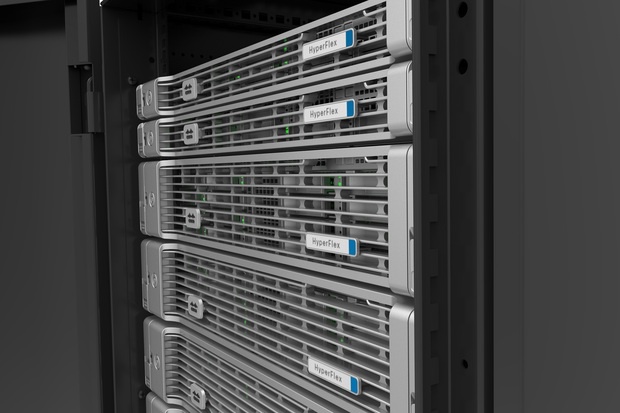Cisco HyperFlex 3.0 includes several new features that let businesses migrate to a hybrid, multi-cloud model and maintain visibility, application performance and scalability.
It’s been a busy hyperconverged infrastructure (HCI) week for Cisco. Yesterday it announced its intent to acquire secure HCI vendor, Skyport Systems. Today it announced HyperFlex 3.0, which is the biggest update Cisco has had to the product since it introduced the product years ago. Cisco’s driving vision is a business that can run any workload on any cloud that can easily scale up as required. This latest release is entirely dedicated to fulfilling that vision.
The cloud is the future, and the majority of businesses will adopt hybrid clouds. In announcing HyperFlex 3.0, Cisco cited an IDC data point that states that 87 percent of businesses are using or plan to use a hybrid environment, and 94 percent plan to use multiple clouds — meaning that hybrid, multi-clouds will be the norm.
Barriers remain on the path to hybrid, multi-cloud
This poses some roadblocks to achieving the “any cloud, any workload, any scale” vision, most notably there’s no single flavor of cloud, leading to a lack of uniformity. There are different hypervisors, applications, operating systems and performance requirements. To meet these requirements, businesses have turned to HCI, which is why it’s been one of the fastest growing infrastructure markets over the past five years. And I certainly don’t expect that to change over the next five.
Cisco was somewhat of a latecomer to the HCI industry but took a bit of a different approach, allowing it to catch up and pass many of its competitors. As I pointed out in my Skyport post, most of the HCI vendors focus only on software whereas Cisco’s strategy has been to build a solution that leverages the strengths of hardware and software. This approach is nothing new for Cisco, as almost all of its products are architected to optimize hardware and software.
The results for Cisco have been more than positive, as there are more than 2,400 HyperFlex customers. One of the more surprising data points from Cisco is that 30 percent of buyers of HyperFlex are not Unified Computing System (UCS) customers. I would have expected that almost all its HyperFlex business would be from the install base of companies that are comfortable buying a compute platform from Cisco. The fact it isn’t that way shows the quality of the product.
New HyperFlex features close the operational and technology gap
The HyperFlex 3.0 software release brings a massive number of new features that improve data center operations in a hybrid, multi-cloud world. Details are as follows:
Applications
- Multi-hypervisor support. Since its inception, HyperFlex has supported VMWare’s ESXi hypervisor. With this release, Cisco has added support for Microsoft Hyper-V. VMWare remains the dominant hypervisor vendors, but Hyper-V is widely deployed, particularly for Microsoft apps.
- Containers volume driver. The product now includes a FlexVolume driver to enable persistent volumes to Kubernetes-managed containers, enabling developers to create and deploy cloud-native apps on the platform.
- Enterprise application validations. To help customers cut deployment times, Cisco has created several validated deployment guides for specific applications. It’s had them for virtual server infrastructure (VSI) and virtual desktop infrastructure (VDI) for some time, but it has created a number of new guides for many of the major enterprise applications, such as SAP, Oracle, Microsoft and Splunk.
Clouds
- Performance monitoring. Cisco’s AppDynamics for HyperFlex enables IT professionals to monitor the performance of hybrid applications running on HyperFlex across public and private clouds. This provides a “single pane of glass” to understand user performance across the entire cloud environment.
- Application placement. Cisco’s Workload Optimization Manager (CWOM) for HyperFlex provides analysis of how workloads will perform on different types infrastructure. This ensures that customers make the best choice as to where it runs workloads.
- Cloud mobility. CloudCenter for HyperFlex enables workloads to easily be moved between public and private clouds.
- Self-service capabilities. CloudCenter for HyperFlex also enables self-service features for IaaS, so developers and administrators can provision infrastructure or make changes without requiring IT support.
Scalability
- Increased scale and resiliency. One of the benefits of the optimized hardware and software approach is outstanding VM density. Customers can increase the number of VMs by clustering multiple HyperFlex systems together. Cisco has increased the number of nodes from eight to 64, creating a massive system.
- Stretch clusters. For businesses that have data protection and/or resiliency requirements, clustering may not be sufficient. Cisco is introducing something called stretch clusters where the cluster can be “stretched” across geographic distances.
- Cloud-based deployment. Cisco’s IT operations management tool, Intersight, now has HyperFlex Connect integrated into it. Intersight gives customers a global view of the environment and then they can drill down into individual clusters with Connect. Businesses will benefit with simplified deployment and remote management capabilities.
 Cisco
CiscoHyperFlex 3.0 licenses
Also as part of version 3.0, Cisco has modified the licensing model for HyperFlex. Historically, there was a single pricing tier for the product. Cisco now considers that its base pricing model and has added two new ones. For customers that need many of the advanced features, there is now an Enterprise Plus pricing tier above the base tier. If the HCI platform is used in a remote location or a branch office, it likely doesn’t need many of the features in the base tier. For those locations, Cisco has introduced an Edge pricing tier below base.
Businesses are becoming increasingly dynamic and distributed, pushing them towards hybrid, multi-cloud environments. HyperFlex 3.0 adds several new features that let businesses migrate to this model but still maintain the visibility, application performance and scalability required to not put the business at risk.
This article originally appeared on NetworkWorld.

